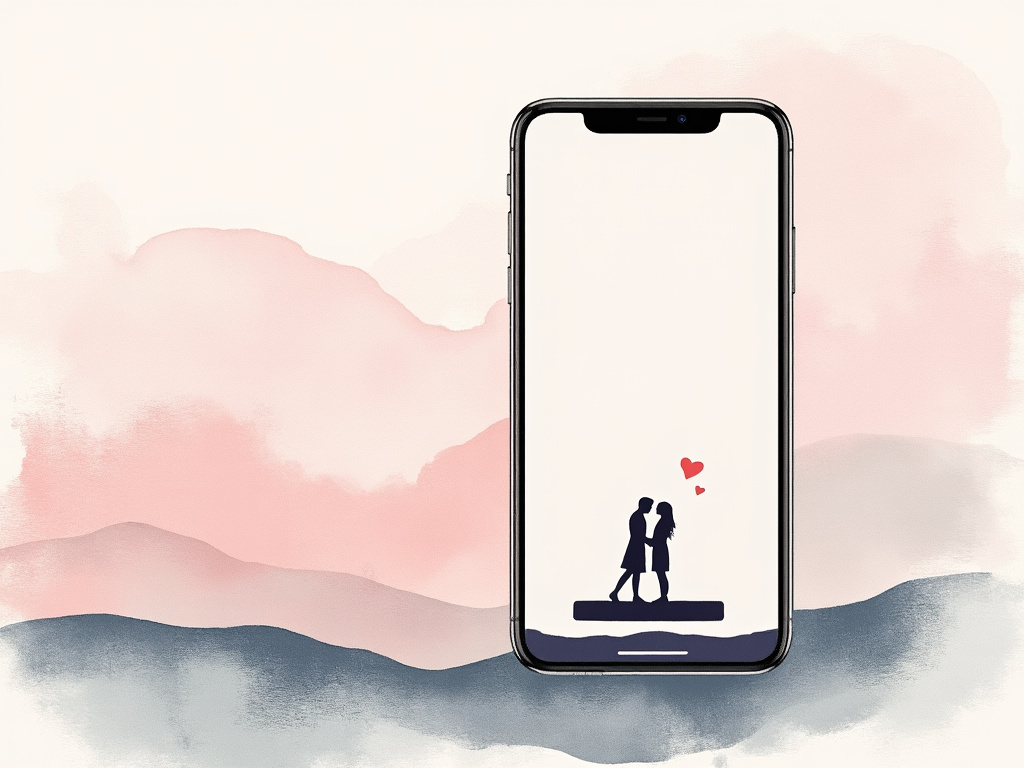
How Your Smartphone Might Sabotage Your Relationship: The Impact of Technology on Connection
Reading time: 8 minutes
Ever notice how your partner’s eyes glaze over when they’re scrolling through their phone? Or caught yourself choosing your device over a meaningful conversation? You’re witnessing one of the most significant relationship challenges of our time. Let’s dive deep into how smartphones are reshaping intimacy and what you can do about it.
Table of Contents
- The Digital Disruption in Modern Relationships
- Understanding the Attention Economy Impact
- When Technology Creates Connection Breakdown
- Practical Solutions for Digital Balance
- Rebuilding Intimacy in the Digital Age
- Your Relationship Recovery Roadmap
- Frequently Asked Questions
The Digital Disruption in Modern Relationships
Here’s the reality: the average person checks their phone 96 times daily—that’s once every 10 minutes during waking hours. Dr. Sherry Turkle, MIT professor and author of “Alone Together,” observes: “Technology promises to let us do anything from anywhere with anyone. But it also drains us as we try to do everything everywhere.”
This constant connectivity creates what researchers call “continuous partial attention”—a state where we’re never fully present with our partners. Consider Sarah and Mark’s story: they realized they hadn’t had an uninterrupted dinner conversation in months, each meal punctuated by notification pings and quick phone glances.
The Invisible Barriers
Smartphones create subtle but powerful barriers to intimacy:
- Attention fragmentation: Your brain struggles to fully engage when anticipating the next notification
- Emotional unavailability: Physical presence doesn’t guarantee emotional presence
- Communication decay: Quick texts replace deeper conversations
- Intimacy interruption: Devices intrude on private moments and meaningful exchanges
The Comparison Trap
Social media amplifies relationship insecurities. When you’re constantly exposed to curated highlight reels of other couples, your own relationship can feel inadequate. Research from the University of Missouri found that high Facebook usage correlates with relationship jealousy and breakup rates.
Digital Relationship Impact Comparison
35% decrease
28% decline
42% reduction
67% increase
Understanding the Attention Economy Impact
Your smartphone isn’t just a communication tool—it’s a sophisticated attention-harvesting machine. Tech companies employ teams of neuroscientists and behavioral economists to make their apps irresistible. This isn’t accidental; it’s by design.
Former Google design ethicist Tristan Harris explains: “The problem isn’t that people lack willpower; it’s that there are a thousand people on the other side of the screen whose job it is to break whatever responsibility you have.”
The Dopamine Connection
Every notification triggers a small dopamine release—the same neurotransmitter involved in addiction. Over time, your brain begins craving these micro-hits of stimulation, making it harder to find satisfaction in slower, deeper forms of connection like intimate conversations or quiet moments with your partner.
| Behavior Pattern | Impact on Relationships | Frequency in Couples | Recovery Timeline |
|---|---|---|---|
| Phubbing (phone snubbing) | Decreased relationship satisfaction | 89% experience weekly | 2-4 weeks with intervention |
| Bedtime scrolling | Reduced intimacy and sleep quality | 74% scroll in bed | 1-2 weeks to establish new habits |
| Social media comparison | Increased jealousy and dissatisfaction | 56% compare relationships online | 4-8 weeks for mindset shift |
| Notification interruptions | Fragmented attention and conversations | 92% experience during quality time | Immediate with proper settings |
When Technology Creates Connection Breakdown
Let’s examine how digital habits specifically damage relationship bonds:
The Erosion of Deep Conversation
Remember when you and your partner would talk for hours? Now, conversations often feel surface-level, interrupted by buzzing phones or the urge to document moments instead of fully experiencing them. Research shows couples using phones during conversations retain 50% less information and report feeling less emotionally connected.
Take Emma and Jake’s experience: they realized their evening “catch-up” sessions had devolved into parallel phone usage with occasional comments about social media posts. The depth of their communication had gradually eroded without either noticing.
Digital Infidelity and Emotional Affairs
Smartphones make emotional infidelity easier than ever. Whether it’s maintaining inappropriate connections on social media, using dating apps “just for validation,” or engaging in secretive texting, digital platforms create new avenues for betrayal.
Dr. Esther Perel notes: “Today’s affairs are often not about sex, but about attention, validation, and the thrill of emotional connection with someone new.” The accessibility of these connections through our devices makes maintaining boundaries more challenging.
The Phantom Vibration Syndrome
When you’re so connected to your device that you feel phantom vibrations, your nervous system is in a constant state of alertness. This chronic stress affects your ability to be present and emotionally available to your partner.
Practical Solutions for Digital Balance ⚖️
Here’s the good news: you can reclaim your relationship from digital disruption. These strategies have helped thousands of couples rebuild authentic connection:
Create Sacred Spaces and Times
- Device-free dining: Make meals a phone-free zone to encourage meaningful conversation
- Bedroom boundaries: Charge phones outside the bedroom to protect sleep and intimacy
- Weekly digital detox: Designate specific hours each week as completely device-free
- Morning ritual protection: Start each day with 30 minutes of connection before checking devices
Implement Smart Notification Management
Take control of when and how technology interrupts your life:
- Turn off non-essential notifications during relationship time
- Use “Do Not Disturb” modes strategically
- Create separate work and personal device boundaries
- Establish phone-free zones in your living space
Practice Intentional Technology Use
Instead of mindless scrolling, approach your devices with purpose:
- Set specific times for checking social media and messages
- Use apps mindfully—ask yourself why you’re reaching for your phone
- Practice the 20-20-20 rule: Every 20 minutes, look at something 20 feet away for 20 seconds
- Replace scrolling habits with relationship-building activities
Rebuilding Intimacy in the Digital Age
Recovery isn’t just about reducing screen time—it’s about actively rebuilding the emotional and physical intimacy that technology may have diminished.
The Art of Presence
True presence requires both partners to be fully engaged. Practice these techniques:
- Eye contact exercises: Spend 2 minutes daily looking into each other’s eyes without speaking
- Active listening practice: Repeat back what your partner says before responding
- Mindful touch: Physical affection without the distraction of devices
- Gratitude sharing: Daily appreciation exchanges without documentation
Communication Renaissance
Rediscover the joy of deep conversation:
- Ask open-ended questions about dreams, fears, and aspirations
- Share personal stories and memories without the urge to photograph
- Discuss books, ideas, and experiences rather than social media content
- Practice vulnerability by sharing emotions without immediate validation-seeking
Creating New Rituals
Replace digital habits with connection-building rituals:
- Morning coffee connection: Start each day with undivided attention
- Evening walk and talk: Process the day together without devices
- Weekly adventure planning: Dream and plan together offline
- Monthly digital detox dates: Explore your city without phones
Your Relationship Recovery Roadmap ️
Ready to transform your relationship from digitally disrupted to deeply connected? Here’s your practical action plan:
Week 1-2: Assessment and Awareness
- Track your usage: Use built-in screen time tools to understand your current patterns
- Identify trigger moments: Notice when you reach for phones during relationship time
- Have the conversation: Discuss digital boundaries together without judgment
Week 3-4: Implement Boundaries
- Create phone-free zones: Start with the bedroom and dining table
- Schedule connection time: Block out device-free time for meaningful interaction
- Practice presence exercises: Begin with 10-minute daily undivided attention sessions
Month 2: Build New Habits
- Establish rituals: Create consistent times for connection without devices
- Explore offline activities: Rediscover hobbies and interests you can share
- Celebrate progress: Acknowledge improvements in connection and communication
Month 3+: Maintain and Evolve
- Regular check-ins: Monthly discussions about digital boundaries and relationship satisfaction
- Adapt strategies: Modify approaches based on what works best for your unique relationship
- Stay accountable: Support each other in maintaining healthy digital habits
Remember: This isn’t about becoming technology hermits—it’s about using technology intentionally while prioritizing human connection. As digital natives continue to shape our world, couples who master this balance will build stronger, more resilient relationships.
The question isn’t whether technology will continue to evolve, but whether you’ll take control of how it influences your most important relationship. What small step will you take today to begin reclaiming authentic connection with your partner?
Frequently Asked Questions
How do I bring up digital boundaries without seeming controlling?
Approach the conversation from a place of love and shared goals rather than criticism. Start with “I” statements like “I’ve noticed I feel more connected when we put our phones away during dinner” rather than accusations. Focus on the positive benefits for your relationship and invite collaboration in creating solutions together.
What if my partner isn’t interested in reducing their phone usage?
Lead by example first. Model the behavior you’d like to see by putting your own device away during quality time. Share specific observations about how you feel more connected during phone-free moments. If resistance continues, consider couples counseling to explore underlying issues around attention, connection, and relationship priorities.
How can I tell if our phone usage is actually problematic or just normal for modern couples?
Key warning signs include: feeling ignored or unimportant when your partner chooses their phone over conversation, experiencing decreased physical intimacy, having more arguments about phone usage, or feeling like you’re living parallel lives despite being physically together. If these patterns persist for more than a few weeks, it’s worth addressing proactively.

Article reviewed by Sophie Laurent, Seduction & Charisma Mentor | Authentic Attraction Through Confidence, on May 29, 2025


